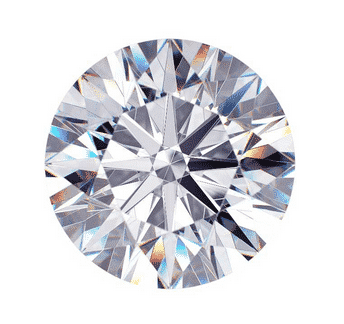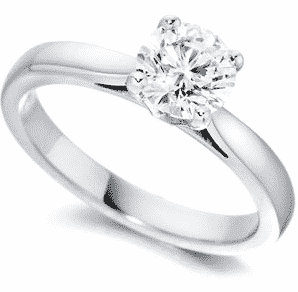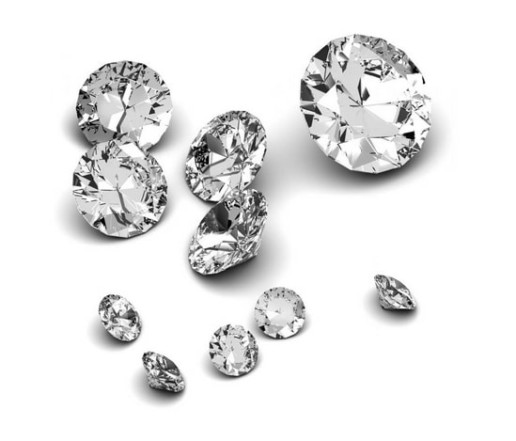Everything You Need to Know About White Diamonds
Over the past few years, colored diamonds have been breaking records all over auction houses. However, there is one kind of stone that hasn’t made so many headlines lately, and that is the white diamonds. If you haven’t been too in love with white diamonds lately then this article will give you reasons on why you should.
You may sometimes hear that the word “white” would refer to colorless diamonds that are within the range of GIA D-to-Z color chart or scale. However, the diamonds that belongs to the D-Z range are not considered to be white at all. Its hues may range from being colorless into something with tints of light brown, light yellow, or gray. Regarding rarity and value of these diamonds, it is based on how close they are in becoming colorless. So with all things considered to be equal, the more colorless a diamond is, the more rare and expensive it also becomes.
There are also some diamonds in which their colors don’t belong to the D-to-Z color range, and they’re referred to having distinct colors. The geological conditions that are needed in order to produce them are rare which makes the naturally colored ones a scarce and highly prized kind. The colored diamonds comes in a variety of colors that you can ever imagine wherein brown and yellow are the most common ones, followed by blue and pink. Green, orange, red, and purple are the rarest of all the colors, but there are also times that the white times are as well.


White Diamonds aren’t Colorless
White diamonds don’t need to be inspected and graded based on the GIA D-to-Z color scale since they aren’t categorized as colorless but rather as white. If you base it on the color spectrum, there’s no white in there because it is considered to be the sum of all colors.
What Makes a Diamond Colorless
Diamonds are made up of carbon. Once it contains pure carbon without any mixture of impurities, then it will become totally colorless. The majority of the diamonds that were mined and grown, normally includes impurities in which it gives the stone its color wherein nitrogen is the most common of them all. During the growth process, these impurities will become part of the diamond lattice thus creating a single-atom that is based on that particular element. The color center will absorb any visible light except for one color that reflects back thus giving the diamond its color. Boron is responsible for giving the blue diamond its color while nitrogen gives diamonds the yellow appearance.
The majority of the diamonds that were mined have an original yellow color since it contains more nitrogen compared to those that were grown in a lab. For millions of years deep inside the earth, the pressure and heat cause a single nitrogen atom to aggregate into 2, 4, or more atom color centers. The aggregated color centers aren’t capable of absorbing light thus allowing the diamond to maintain its whitish appearance.
When a diamond is being grown, labs and companies don’t have many years to spare to color the yellow diamonds and turn them into white ones but would rather grow them with little to no nitrogen at all.
How Much is the Growth Duration
When a diamond has little or no nitrogen, then the crystal starts growing very slowly and may require two weeks for it grow into a rough that is also strong enough to cut into a one carat diamond.
During the entirety of the growth cycle, it is needed to maintain the same set of constraints for the pressure and heat. If a fluctuation can be experienced during the heat or pressure process, then the diamond will stop growing or may become heavily included since its further growth will make the stone totally useless.
The reason why a white diamond is the most difficult and least available color is that you can easily control the needed growth conditions for a specific amount of time it will require to grow thus making it the least available color of all.
What Makes Up a White Diamond?
There are submicroscopic inclusions in these stones that allow light to pass through the stone thus giving it that translucent “milky” white face-up look.
White diamonds are often described as “opalescent” because of the different streaks of color that can be seen upon viewing it in a face-up direction. Also, white diamonds closely resemble a white opal with a weak play of different colors.
The GIA rarely receives white diamonds for inspection, but there are times that they also examine it especially if it came from the Panna mind in India. So if ever you come across one during a museum visit or shopping expedition then you can consider yourself to be lucky enough to see it in person.
Being able to determine a fancy colored diamond’s color grade is not an easy thing to do, and there are numerous factors that make the process an even more challenging one. So make sure that you check out each one of them to ensure that your knowledge about diamonds is a diverse one.

A Glimpse of Some of the Famous White Diamonds from Around the World
Just like the other diamonds, the white ones also have a variety to show off of their own. These includes:

- During 1880, Mr. Porter-Rhodes in the Kimberly Mine owns the white or colorless Porter Rhodes Diamond.
- During 1701, a slave in the Parteal Mines on the Kistna River has discovered the white or colorless Regent Diamond.
- During 1895, a white, cushion-shaped diamond named the Jubilee Diamond was discovered in the Jagersfontein Mine.
- During 1968, a famous movie star by the name of Elizabeth Taylor became the owner of two diamonds which are the Krupp diamond and the Taylor-Burton diamond.
- As for the other famous white diamonds, these includes the Centenary, Cullinan I, Cullinan II, Jubilee, Lesotho Promise, La Luna, Millennium Star, Jacob, Orlov, Moon, Premier Rose, Paragon, Great Brazilian, Queen of Holland, Al-Nader, Jonker, Niarchos, Edna Star, Taj-i-Mah, Cartier, Rojtman, Uncle Sam Diamond, and the Koh-I-Noor.
The Difference between White and Colored Diamonds
Pure or nearly pure white diamonds are transparent and colorless in nature while the colored ones have some impurities or structural defects which give them their unique colors. The most known impurity in a diamond is nitrogen wherein it causes a slight to an intense yellow color depending on the type as well as the amount of nitrogen present in it. Diamonds that contain a detectable hue apart from brown or yellow are called colored diamonds.

